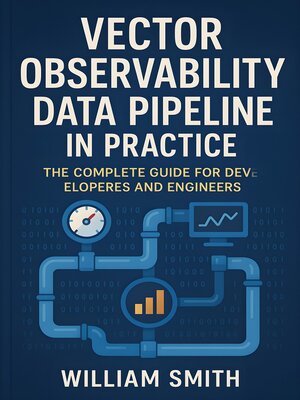Vector Observability Data Pipeline in Practice
ebook ∣ The Complete Guide for Developers and Engineers
By William Smith

Sign up to save your library
With an OverDrive account, you can save your favorite libraries for at-a-glance information about availability. Find out more about OverDrive accounts.
Find this title in Libby, the library reading app by OverDrive.



Search for a digital library with this title
Title found at these libraries:
| Library Name | Distance |
|---|---|
| Loading... |
"Vector Observability Data Pipeline in Practice"
In the era of cloud-native, distributed architectures, achieving comprehensive observability has become both a strategic imperative and a complex technical challenge. "Vector Observability Data Pipeline in Practice" offers a clear, in-depth guide to building, scaling, and securing telemetry pipelines with the Vector platform. The book begins by establishing the modern principles of observability, tracing the evolution from traditional monitoring to unified data flows, and sets the stage with pragmatic discussions of telemetry, data growth, and industry standards like OpenTelemetry.
Building on this foundation, the book provides a thorough exploration of Vector's modular architecture, from source integration to transformation logic and high-efficiency delivery. Readers are guided through enterprise-scale pipeline design, including robust configuration, extensibility with custom plugins, and proven strategies for managing data quality, compliance, and multitenancy. Rich operational guidance covers containerization, Kubernetes orchestration, advanced deployment techniques, and the essential practices for real-world reliability, failover, and resilience.
Security and compliance are treated as first-class concerns, with detailed frameworks for threat modeling, encryption, auditing, and privacy regulations such as GDPR. The latter chapters equip practitioners with advanced techniques—streaming analytics, machine learning integration, pipeline tuning, and troubleshooting—ensuring both operational excellence and innovation. The book concludes with a forward-looking view on edge observability, serverless paradigms, zero-trust pipelines, and the broader ecosystem integration, making this an essential resource for SREs, platform engineers, and architects seeking to master observability pipelines at scale.







